Meeting with the mongoose
A quick and heavy downpour just came to a halt. The crackling sound of the heavy raindrops, that were descending steeply on the leaves, were replaced by the ones from chirps that gladly settled on the surrounding branches. While the brain was trying its best to identify the calls of the birds coming from high in the canopy, my eyes were fixed on the dead branch only to realise a few seconds later that there is a familiar reddish brown coat which was camouflaged excellently against the bark was none other than the spectacular Stripe-necked Mongoose. It was one of those unexplainable mythical moments.


A Stripe-necked mongoose resting on the dead tree.
Stripe-necked mongoose (Urva vitticolla) - the largest of the asiatic mongoose - is found both in India and Sri Lanka. While there are 6 varieties of mongoose found in various geographical locations in India, the Stripe-necked’s stronghold is in the Western ghats. However there are records of camera traps showcasing that they are found in the Similipal as well. Its primary habitat includes deciduous forests (moist and dry), scrublands and in plantations like rice and tea plantations, the later one was not too far from the place where I had spotted these a few times. They are quite easy to spot as their colour is quite unmistakably striking. The ones with orangish tint on their body are the ones mostly belong to the Southern part of the ghats.
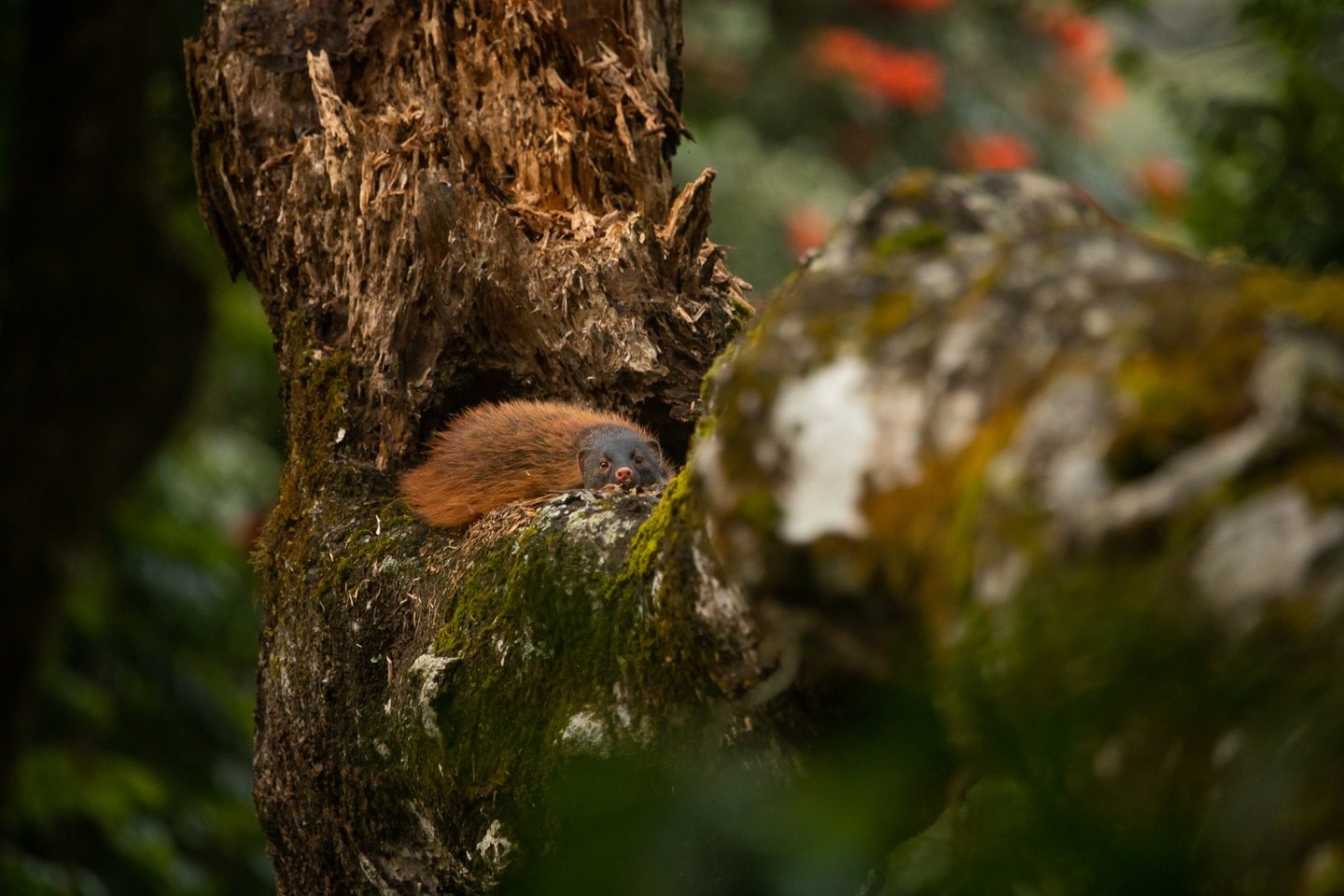

It was a surprise for me that it chose not run away from me but to continue to take pleasure in its sleep.
While I was observing it lying on the branch, there were only two movements it offered - to stare at me and then yawn occasionally. During the other times it remained placing its neck on the rain soaked branch while its tail placing inside the hole which was at the edge of the branch. Perhaps enjoying the melodious tunes of the Malabar Whistling Thrush along with the post-rain breeze.
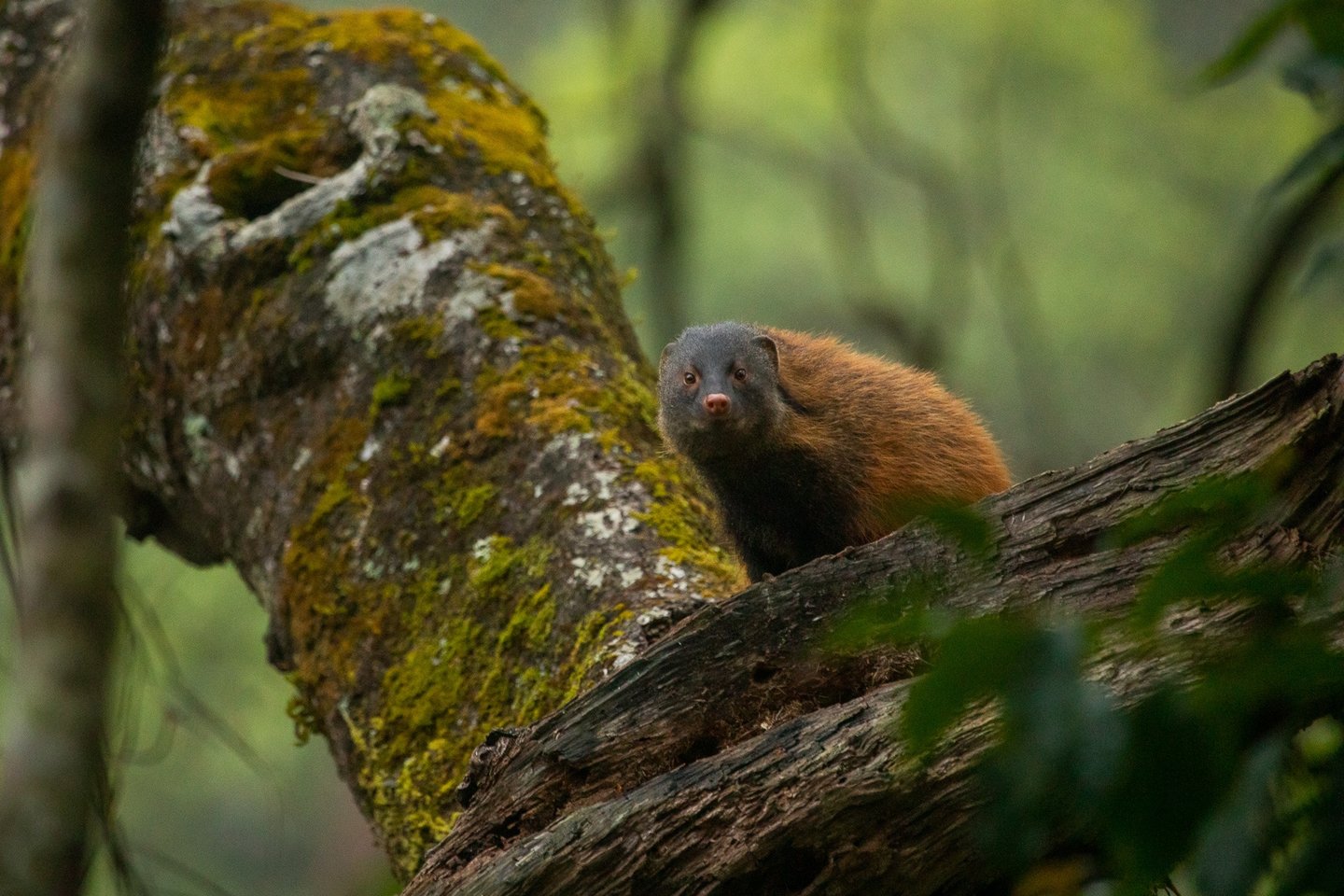

A stripe on either side its neck runs through and hence the name, Stripe-necked mongoose.
Seeing the mongoose in such a close distance I was very excited and rushed to get my camera and when looking through the viewfinder it just got even better as the mongoose turned its head towards me now. To my utmost surprise, it did not care about my presence. I am very used to seeing them on the ground, especially during the monsoons, when they move in such a hurry to find insects with their heads down and of course occasionally staring at people only to run away somewhere to hide later.
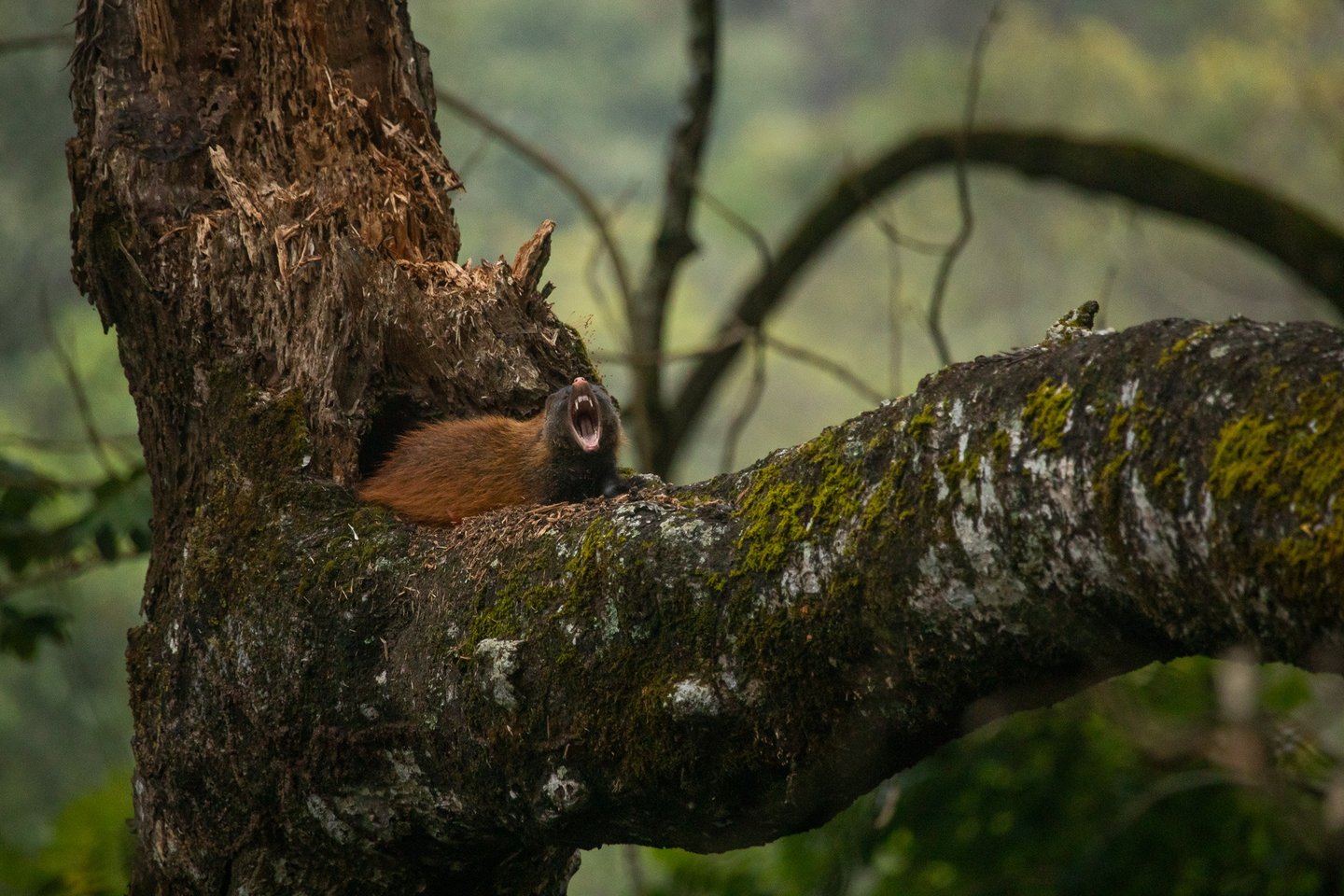

One of the two things it continuously doing while I was nearby was staring at me and then yawn.
At last it was on its feet and just like most human beings it did not get up and walk all at once. It remained seated comfortably on the branch for sometime staring at the photographer subtly, then after a long leer on the ground it had decided to stroll on the branch.
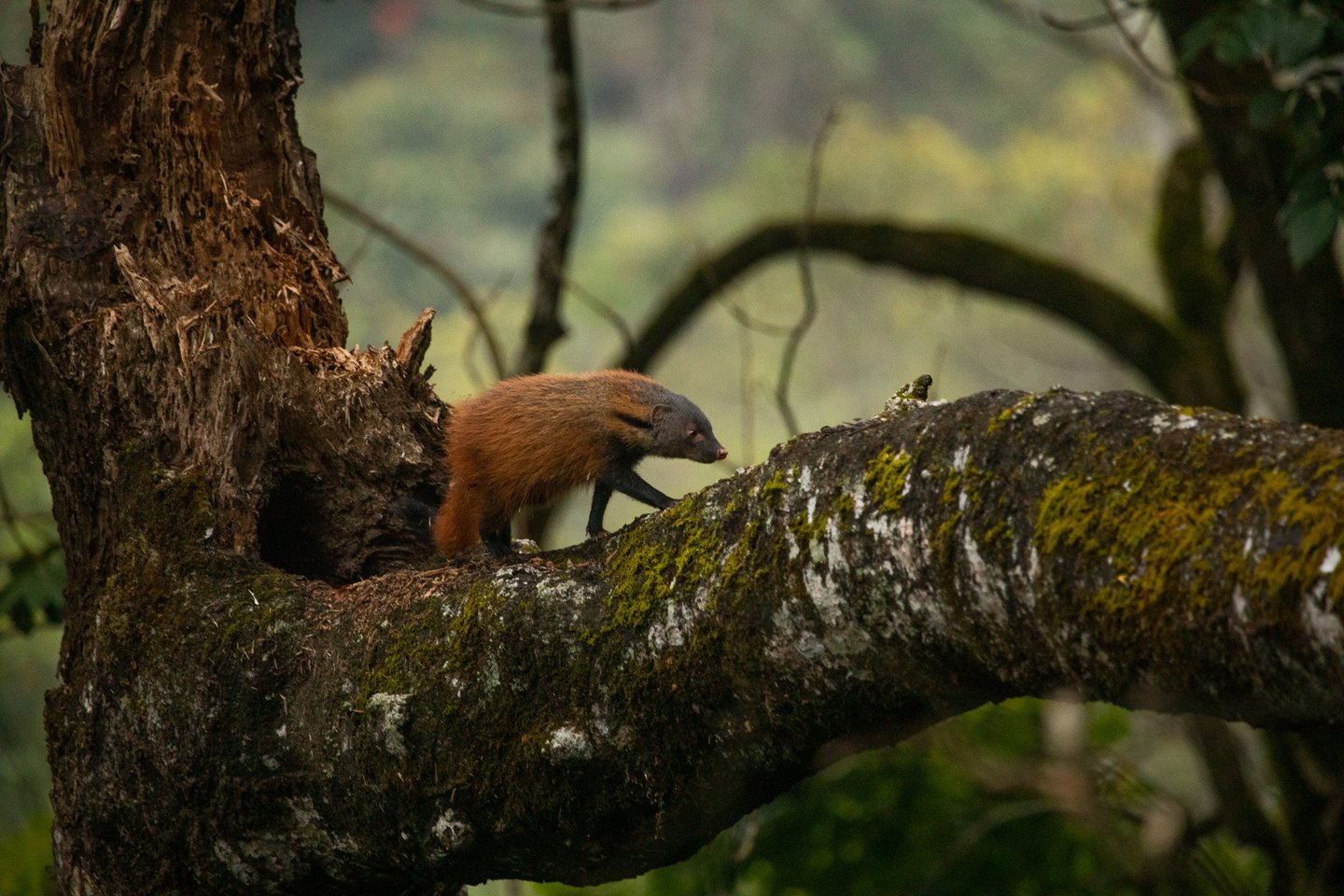

Finally it got up, inspected its surroundings and started to walk on the branch.
While walking, for the reasons unknown, it was taking a smell on its path and occasionally pausing a little before further moving on, only to find a hole in the middle of the branch in a hope probably to find something to eat. They usually feed on the birds, small mammals, invertebrates and eggs of birds.
All the while during its stroll, it constantly kept an eye on me. There was a quick curious glance for every couple of sniffs on the wood. Even after it finished its search inside that hole, it turned its head towards me. Then for some reason it went back to the place where it had initially started strolling and then again turned its head around to see if I was there. My stillness perhaps gave it a much needed assurance that both of us can mind our own business without interfering with each other’s activities.
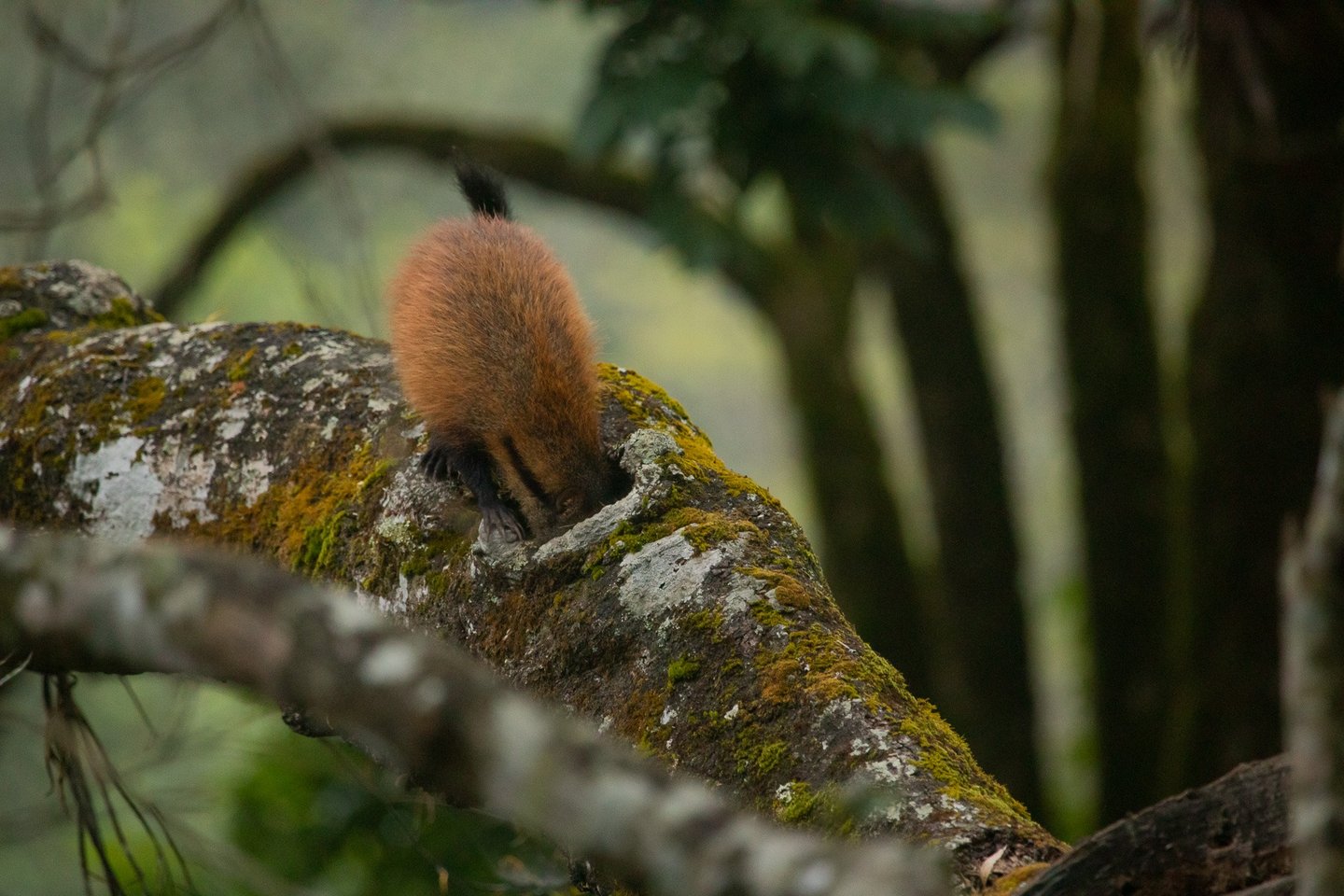

Inspecting in the hole of the branch in a hope to find insects to eat.
Finally it came to the edge of the branch and gave again a long glance towards me and then on the ground but this time it went down. I could not go after as it was moving quiet fast.
I came back to the very place where I started my birding and continued to listen to the calls of Hill myna. After few minutes, few tender herbs were shaking and when waiting for a while I saw the same mongoose again strolling silently, even the sound of the leaf litter that it was stepping were hardly audible. We saw or rather glanced at each other again, perhaps for one last time while my interest shifted towards the bracket fungi and it then continued its trail by smelling and inspecting things on the ground. I took few images of the fungi and kept an eye on the mongoose, I could only see the backside of its body and continued to stare until its tail had disappeared.
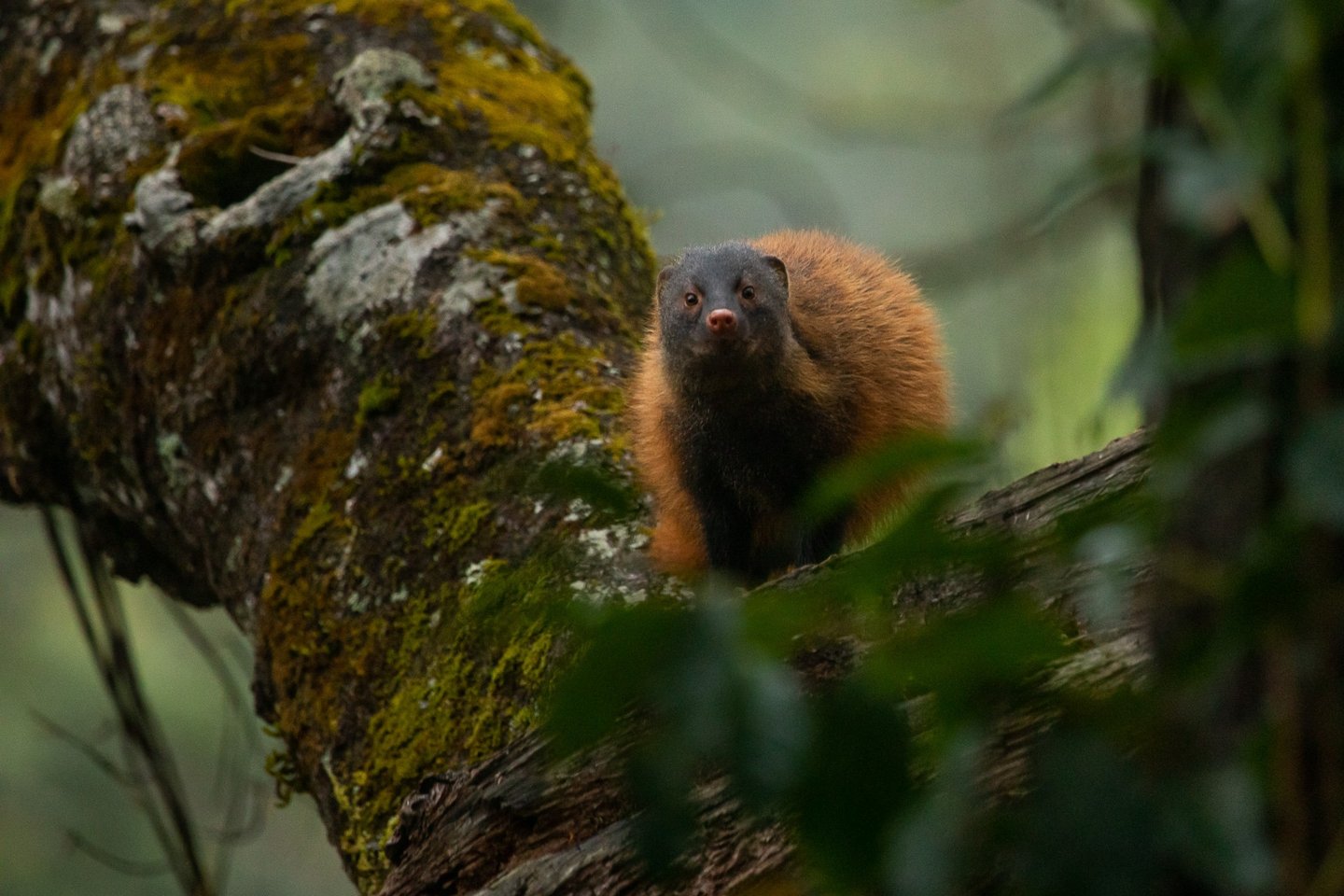

Gave one final glance at me before jumping down in search for food.
Mongooses play a very significant role in the ecosystem. Since they prey on lizards, rats, snakes and other smaller animals, they are considered as friends of farmers. However, they are unfortunately being poached for their hair which is unsympathetically used in making hair and paint brushes.
